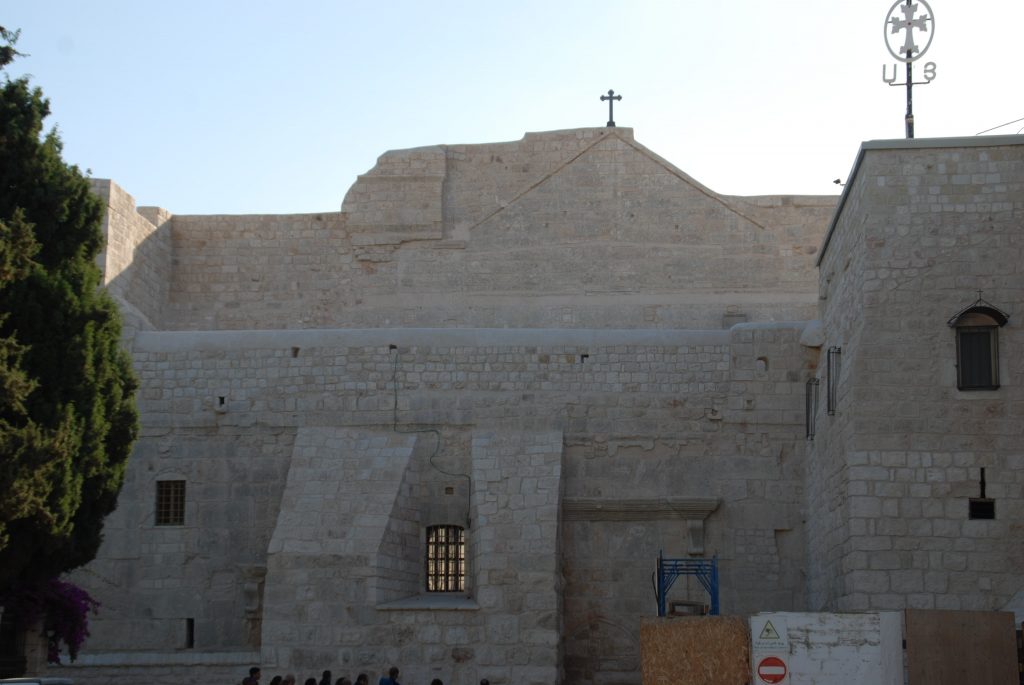 In celebration of Christmas, I am excited to share my experience of visiting Bethlehem’s Church of the Nativity. The opportunity for me to take a pilgrimage to Israel, was not only an incredible education in history, but most important, a spiritual journey. For centuries, this land has been the center of three religions: Judaism, Christianity and Islam, but I was most interested in exploring the Christian sites and walking where Jesus had walked.
In celebration of Christmas, I am excited to share my experience of visiting Bethlehem’s Church of the Nativity. The opportunity for me to take a pilgrimage to Israel, was not only an incredible education in history, but most important, a spiritual journey. For centuries, this land has been the center of three religions: Judaism, Christianity and Islam, but I was most interested in exploring the Christian sites and walking where Jesus had walked.
On the corner of Manger Street is the location of Bethlehem’s Church of the Nativity, representing three places of worship for the Greek Orthodox, Armenian and Roman Catholic faiths. While not much is known about this site archeologically, the cathedral was built over the alleged cave where Jesus was born (Luke 2:1 – 20). The first shrine was built by Constantine in the 4th century and later rebuilt by Justinian. The focal point of what may be the oldest complete (having not been destroyed by the Romans) church in the world, is the Grotto of the Nativity where a star has been placed at the site of Jesus’ birth in a cave.
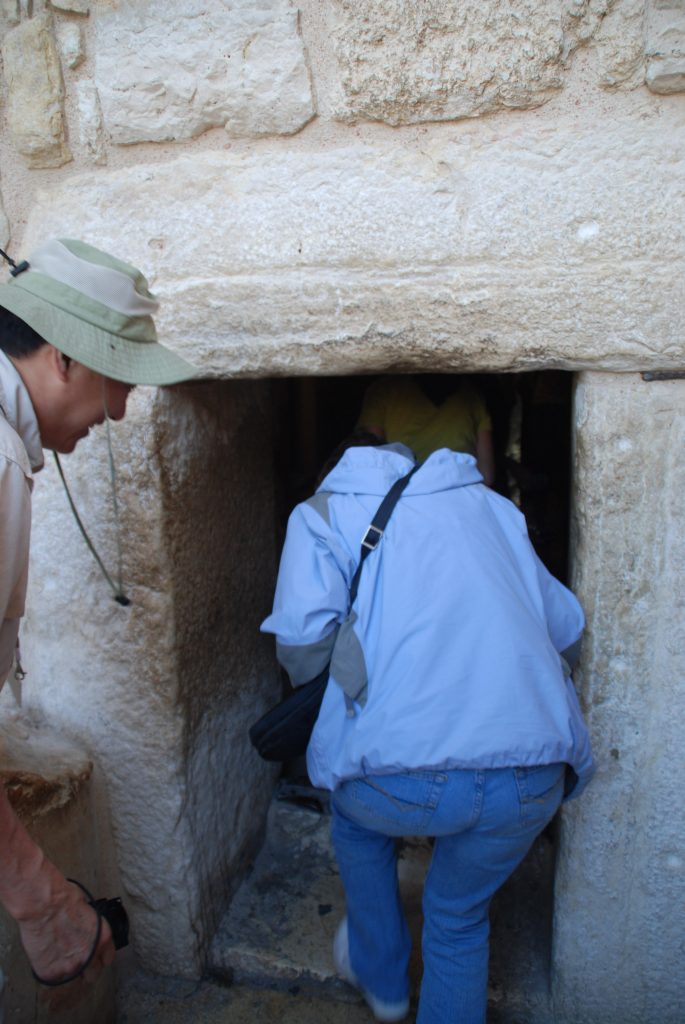
The church, with its simple stone hewn exterior, resembles a fortress. We entered by stooping through the four foot door, the “Door of Humility”, which was intentionally lowered to prevent looters from entering with their carts. On this site there are actually three churches and this doorway leads into the Greek Orthodox monastery. The doorway opened up to the main Basilica of the Nativity where five aisles were partitioned by forty-four beautiful Corinthian red limestone columns adorned with figures of the saints. Mosaics covered the walls leading to an apse at the end of the long hall where the sanctuary is located and scaffolding was propped up against the wall where an ongoing restoration project was taking place.
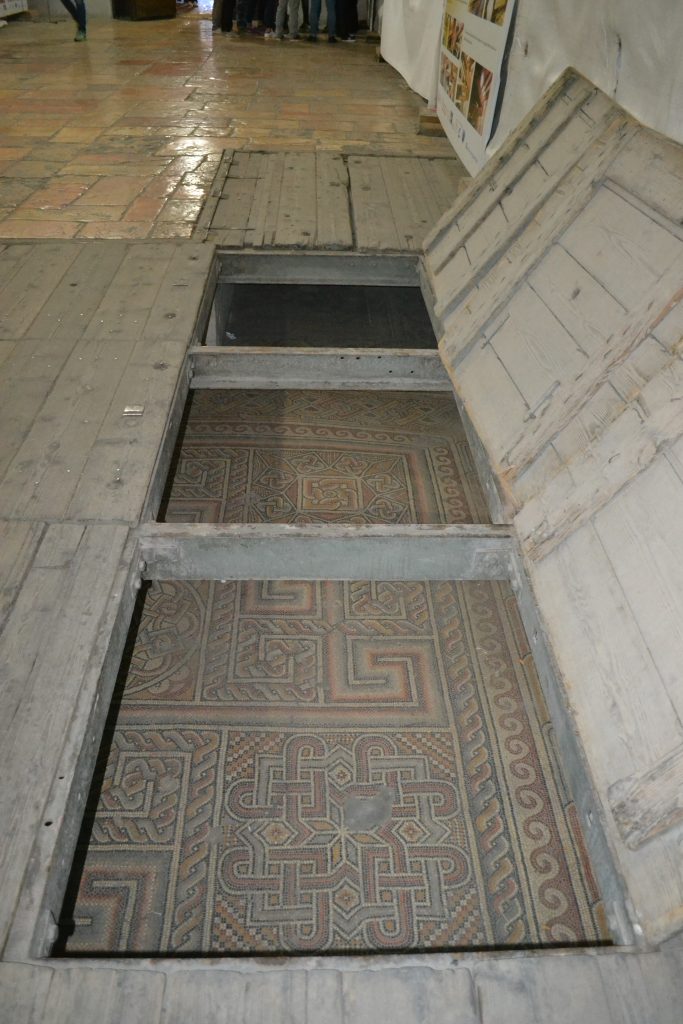
While very little remains of Constantine’s basilica, our guide opened a trap door covered with flagstones to expose a portion of the original mosaic flooring. Dating back to the 4th century AD, this extraordinary discovery provides visitors a look into the historical site that was determined by Helena, the mother of Emperor Constantine, to be the original cave as the place where the Christ Child was born.
While there have been several reconstructive changes to The Church of the Nativity, the structure that remains today is Justinian’s 6th century renovation. We continued our exploration of the church walking towards the east end where the raised chancel was located. Beneath the open ceiling with exposed wooden rafters and gorgeous sanctuary lamps, we are surrounded by scaffolding and evidence of a $15 million restoration to be completed in 2018. A stairway to the right of the iconostasis (the carved screen in front of the altar) lead down into the Grotto of the Nativity.
The Grotto is a system of caves beneath the Church of the Nativity. Under the main altar is the cave considered to be the location where Jesus is said to have been born.
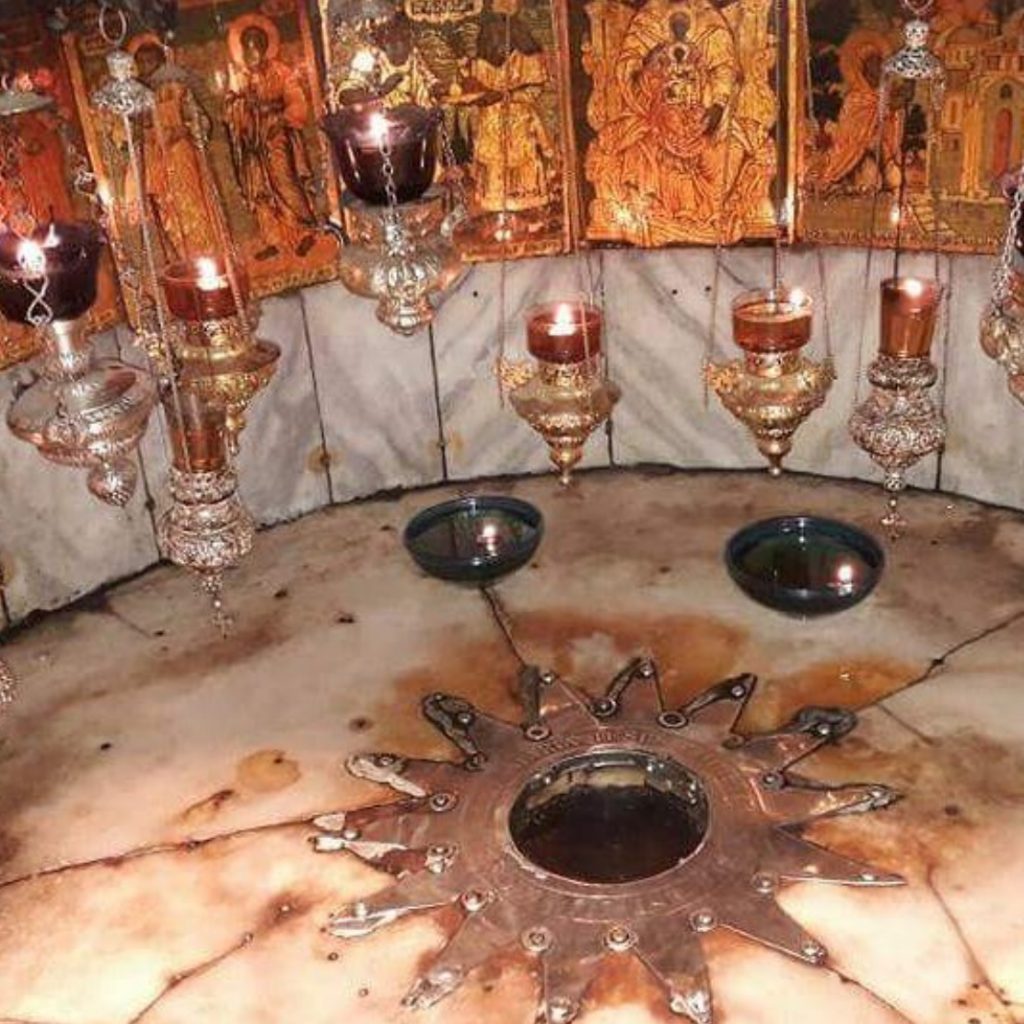
The Altar of the Nativity represents the exact spot where Jesus was born and is indicated by a 14-pointed silver star set into the marble floor, which is said to either represent the 14 stations of the cross or the 14 generations cited in the book of Matthew. Fifteen silver lamps represent the three Christian religions of the Greek Orthodox, Roman Catholic and Armenian Apostolic churches. The Roman Catholics maintain the section of the Grotto designated as the “Grotto of the Manger” marking the location where Mary laid Jesus in the manger and an altar is located directly opposite the manger site. Greek Orthodox and Armenian churches maintain the Altar of the Nativity. For centuries, religious pilgrims have knelt before the silver star in worship of the Christ Child.
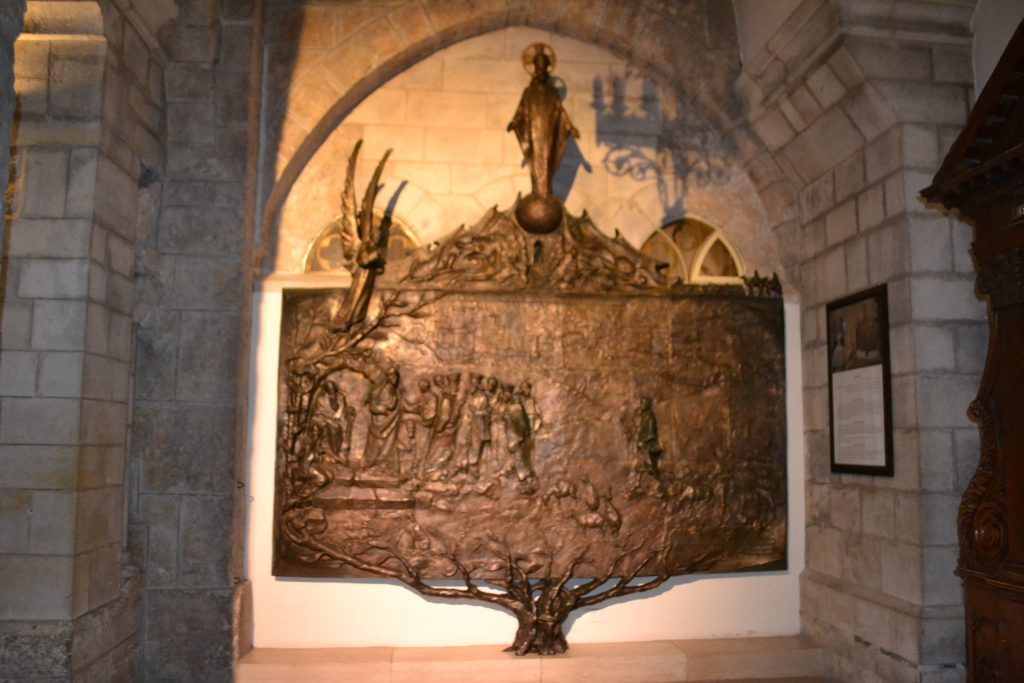
Before entering the Church of St. Catherine, there is a beautiful bas-relief of the Tree of Jesse. Measuring 12 by 13 feet, it was presented to the church by Pope Benedict XVI during his 2009 pilgrimage to the Holy Land. This beautiful carving represents the genealogy of Jesus beginning from the patriarch Abraham through Joseph, the earthly father of Jesus.
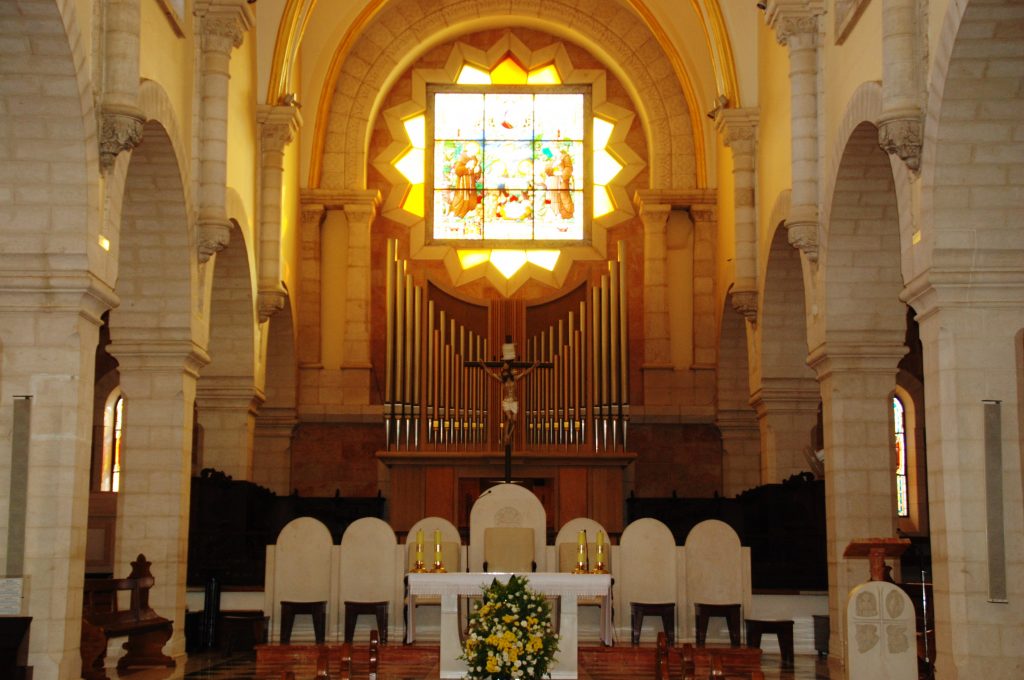
The Gothic Revival style church on the opposite side of the Greek Orthodox chapel is the Roman Catholic church dedicated to St. Catherine of Alexandria. Each year, the Latin Patriarch of Jerusalem holds its Midnight Mass here on Christmas Eve. Within the grotto, several early century chapels remain and can be accessed from the Roman Catholic Church of St Catherine’s.
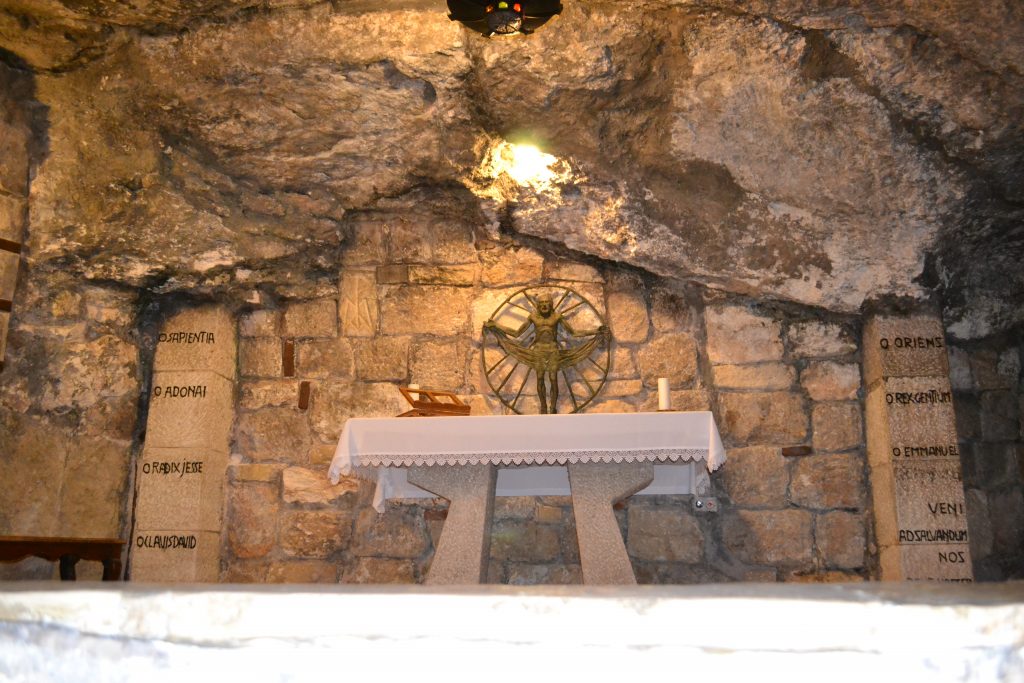
The Chapel of St. Joseph commemorates the appearance of an angel to Joseph, ordering him to leave Bethlehem for Egypt as documented in Matthew 2:13. “When they had gone, an angel of the Lord appeared to Joseph in a dream. “Get up,” he said, “take the child and his mother and escape to Egypt. Stay there until I tell you, for Herod is going to search for the child to kill him.”
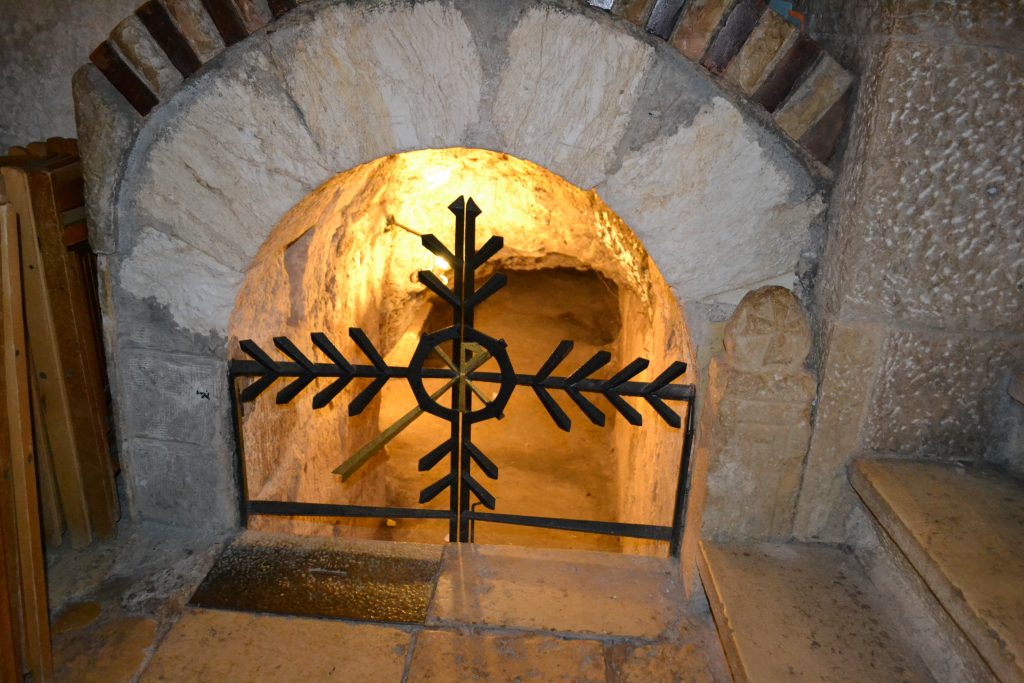
The Chapel of the Innocents memorializes the diabolical plan of Herod to kill innocent children when he thought there was threat to his position as King of Israel. This story is outlined in the Gospel of Matthew, Matthew 2:16 – 18: When Herod realized that he had been outwitted by the Magi, he was furious, and he gave orders to kill all the boys in Bethlehem and its vicinity who were two years old and under, in accordance with the time he had learned from the Magi. Then what was said through the prophet of Jeremiah was fulfilled: “A voice is heard in Ramah, weeping and great mourning, Rachel weeping for her children and refusing to be comforted, because they are no more.” (Jeremiah 31: 15)
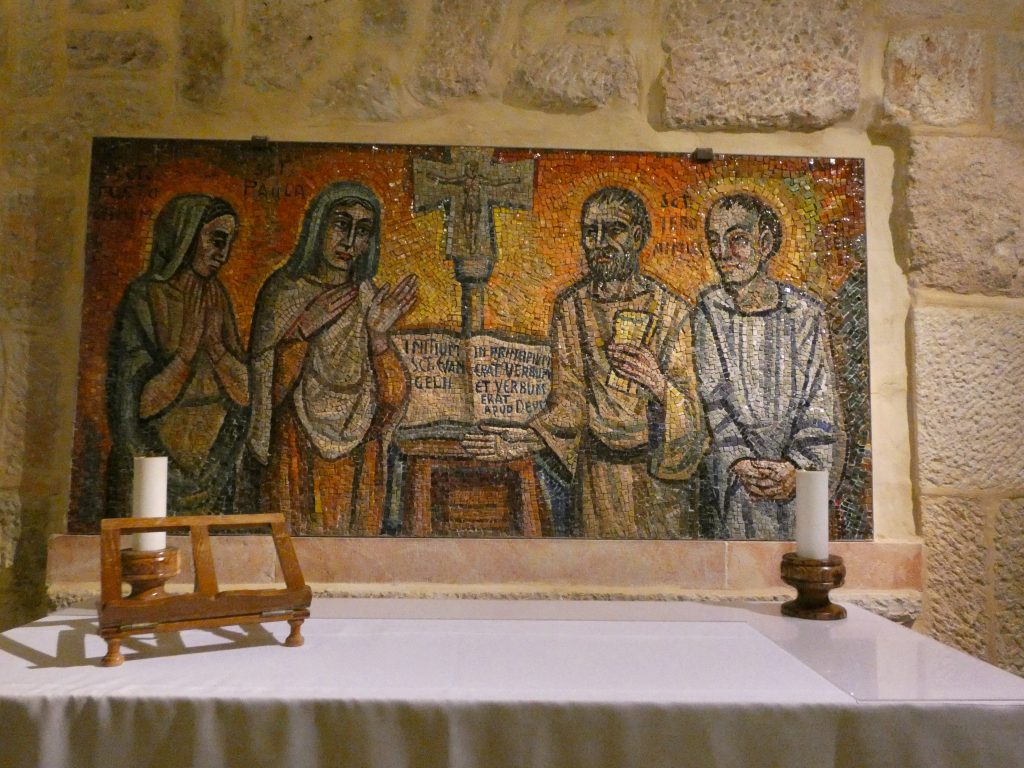
Saint Jerome is known for his translation of the Bible into Latin, referred to as the Vulgate. In the year 388, Jerome arrived in Bethlehem and spent the rest of his life in the cave where Jesus was born. During this time, he completed his Biblical translations and wrote several commentaries on Scripture.
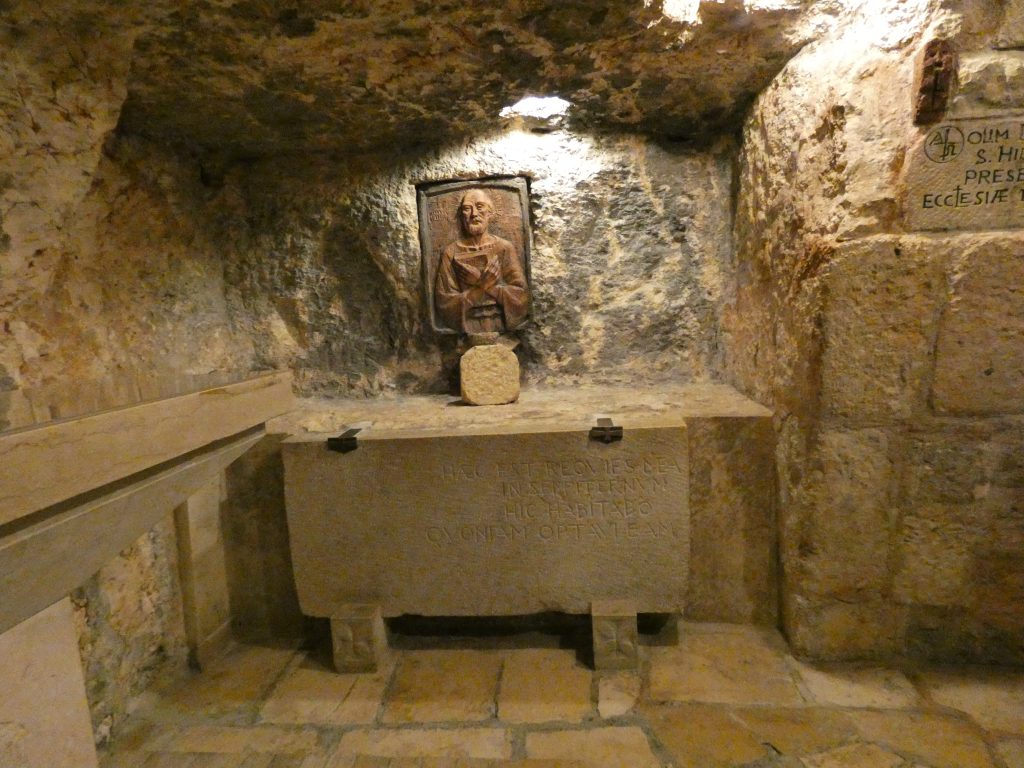
Originally buried in the caves of Bethlehem in 420AD, Saint Jerome’s remains were eventually transferred to the basilica of Santa Maria Maggiore in Rome, where he had lived and eventually became a Christian. Disciples of Saint Jerome, Paula, Eustochium and Eusebius of Cremona are also thought to have been buried in these caves.
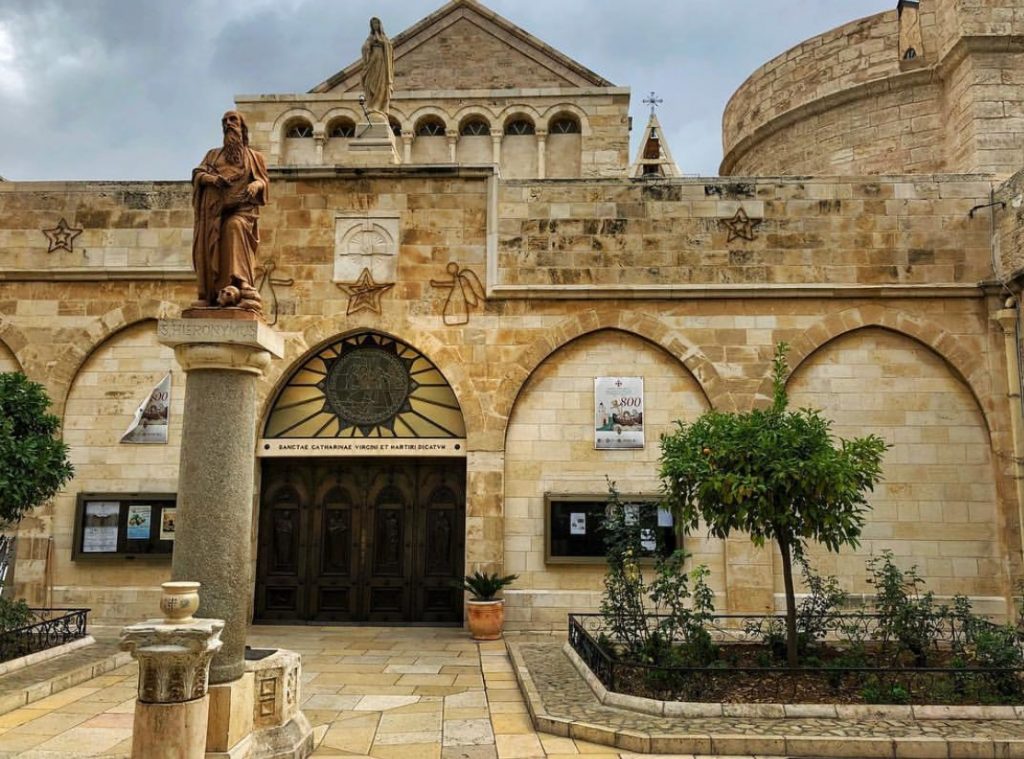
After exploring the underground caves, our tour guide brought up back up through the church and exited out into the courtyard. This spectacular UNESCO World Heritage Site escaped the destruction of the Persians in 614 AD, not because it was a pilgrimage site, but that the commander noticed the Three Magi wearing Persian Zoroastrian priestly clothes and ordered it to be spared. I thought about the miraculous survival of the Church of the Nativity as it had escaped damage from major earthquakes, fires, the Roman destruction and neglect over so many years. God had surely spared this church.
So while Christians all over the world are celebrating the birth of Christ on December 25th, the church that commemorates His birth still has 13 days to wait for the Orthodox observance and a further 12 days for the Armenian Christmas. I wouldn’t mind celebrating twice.
Have you had the opportunity to explore the Church of the Nativity? What were your thoughts about your visit? I would love to hear about your time spent in Bethlehem if you would kindly leave a message in the comments section below. Many thanks for reading about my unforgettable journeys throughout Israel and wishing you many Happy Travels, a Merry Christmas and an exciting 2019!
What to See and What to Do:
The Church of the Nativity
Manger Street at Manger Square
Bethlehem, Palestine
Telephone: +972 2 2742440
- Admission Fee: No charge unless you decide to hire a guide.
- Hours: Apr-Sep 6.30am-7.30pm, Oct-Mar 5.30am-5pm (grotto closed Sunday morning)
- Amenities: Historical and religious sites.
- Scenic View: The Grotto of the Nativity, the additional grottoes connected to the Church of St. Catherine, the courtyard.
- Length of Visit: 2 – 3 hours
- Tips for Your Visit: Arrive early in the day or later in the afternoon. Expect a long queue to see the Grotto of the Nativity. Be aware that shoulders and knees must be covered. There are additional grottoes off of the Church of St. Catherine and expect waits to enter the underground passage as well. Be prepared for large tour groups as well that enter the church with guides. Unless you have thoroughly researched the site, it is best to hire a guide.
Where to Stay:
Mount David Hotel
Manger Street
Bethlehem, Palestine
Telephone: +972 2 2766511
Where to Eat:
The Tent Restaurant
Shepherd’s Valley Village
Beit Sahour, Bethlehem, Palestine
Telephone: +972 2 2773875
Try the local cuisine (schawarma and falafel) in an outdoor setting, or under a tent during winter.
What to Eat:
- Kubbeh is similar to falafal in that it is served in a ball but made with meat and spices then deep fried.
- Manqusheh is similar to pizza made with flatbread topped with olive oil and spice (usually za’atar which is similar to thyme)
- Ka’ak is a large pretzel like pastry that is usually eaten at breakfast time. Crunchy on the outside and soft on the inside, they are readily available at bakeries and roadside stalls.
- Potato swirls are similar to french fries, cut and deep fried.
- Qatayef is a pancake-style dessert stuffed with cheese, nuts or sugar and spices and are popular during the Ramadan holiday
- Kunafeh is a pastry similar to baklava covered in syrup and cheese
What to Read:
- The Birds of Bethlehem by Tomie dePaola
- Song of Bethlehem, by Teresa Prins Wood
- The Star of Bethlehem: The Legacy of the Magi by Michael R. Molnar
Photo Guide for Bethlehem:
- The star which marks the supposed location where Jesus was born at the Church of the Nativity
- The Bethlehem Market for colorful merchandise, stalls and restaurants.
- The Wall which is a barrier that separates Bethlehem from Israel which is colorfully decorated with murals
Disclosure: Please refer to our blog disclaimer tab for more information.